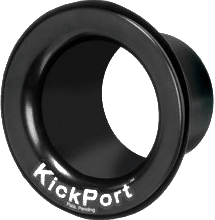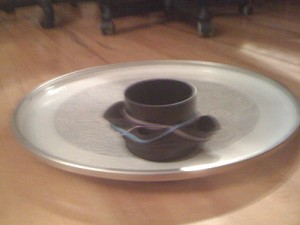I got to experience my first California NAMM show at the Anaheim convention center this past weekend and boy did it live up to the hype. It’s fitting that the convention center is right next door to Disneyland because NAMM is a disney experience for musicians and gearheads alike.
I was advised to download the NAMM app and the have a plan of attack so right after getting my badge I headed directly to the Sabian booth (more like a fortress) to check out their new big and ugly collection of cymbals. These cymbals are all 22 inches and above and they are some mean looking cymbal machines! These dark and dry cymbals are perfect for jazz drummers. They have the look and feel of the Meinl sand rides but are bigger and uglier! Some of them even have burn marks! I really loved the feel of the HH King ride! Sabian’s booth looked amazing and I think they hit a home run by bringing their hand hammer master Charlie Brown out with them to demonstrate that entire hand hammering process! Check out Sabian’s A&R Chris Stankee giving the low down on these:
Paiste’s new line PSTX line of cymbals also caught my attention. These special effects cymbals actually sounded good with just hitting them with my hands. These cymbals would make a good fit with a hybrid acoustic\electric kit as they are more metallic sounding than most effects cymbals I’ve played. They also added hi-hats to this line which were kinda weird to play but sounded very cool-especially when closing the hats together with the pedal. Check out Paiste’s Andrew Shreve’s demo.
Another product that caught attention was the Overtone Labs Tune-Bot. This product has been around for a at least a few years but what was interesting is that Pearl is now selling it as one of their products. It’s a pretty cool product that I think has great value in the studio especially when you want each lug tone to be matched. Check out the demo given by Glen Caruba:
Another highlight was Rotodrum. This Italian based company makes an extremely versatile and innovative line of drums. Inventor Riccardo Martinazzi engineered a drumming system that enables the drummer to change the drum tones very quickly by adjusting the position of the top and bottom heads. This means you can change sounds of any drum on the fly. Pretty cool. Perhaps the best innovation about these drums is that you can place the mic directly between the batter and resonate head. They also make a three headed snare drum which gives you endless sonic capabilities.
You can find out more info at rotodrum.com
Rounding out some of the other highlights for me in the custom drum category was getting a chance to play a birch Sakae kit, the beauty of the new maple Craviotto timbales, and the great tone of the Brazilian based Odery drums.

 I needed to add some low end to my 20 inch kick drum so I decided to give the
I needed to add some low end to my 20 inch kick drum so I decided to give the 


